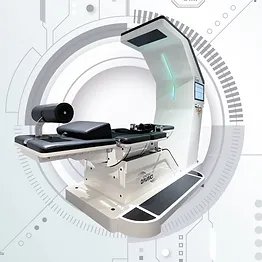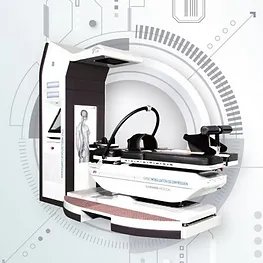Disc-herniation
Pain Symptoms
Headache Symptoms
Shoulder & Neck Pain
Spine & Joints
- Disc-herniation
- Scoliosis
- Sciatica
- Back Pain
- Ankylosing Spondylitis
- Osteoporosis
- Pregnancy Pain
- Bone Spur
Upper Limbs
Lower Limbs
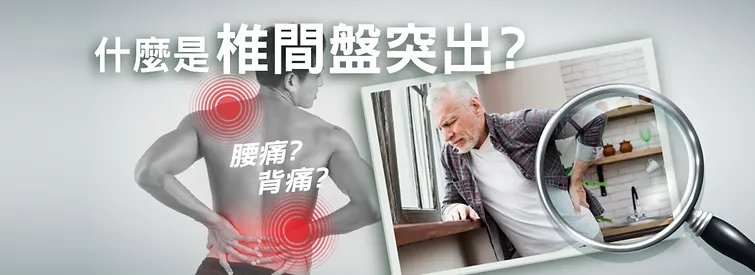
What is disc herniation?
Most of us have heard that a herniated disc is the cause of lower back or back pain, but do you know what is an intervertebral disc? Our spine is a curvy structure made up of over thirty vertebrae. The cartilages connecting the vertebrae are called intervertebral discs, which consist of two parts: the annulus fibrosus and nucleus pulposus. The annulus fibrosus is the outer ring of the intervertebral disc, consisting of layers of lamellae rich in collagen and proteins. The nucleus pulposus is the soft and jelly-like inner core of the intervertebral disc that moves within the disc with changes in our postures. The intervertebral discs connecting different vertebrae function as shock-absorbing cushions to buffer the impact and pressure on the spine during our daily activities and thus enable the free movement of our body and spinal joints. If the intervertebral discs slip out of place under pressure due to various reasons, this condition is called disc herniation. The herniated disc may compress the nerves and causes pain in different body parts. Typical treatments involve rotation, relaxation and traction therapies to adjust the positions of the intervertebral discs and relax the compressed nerves.
What are the causes of disc herniation?
Disc herniation is primarily associated with poor lifestyle habits.
Prolonged poor posture. If you bend over too much or often look down at your phone, these postures may exert excessive pressure on the cervical or lumbar spine and tear the annulus fibrosus. The jelly-like nucleus pulposus will then slip through the tear and compress the surrounding nerves such as the sciatic nerve, leading to sciatica. Most patients will experience pain, numbness and even weakness and stiffness in the affected area. Other factors such as wearing high heels for long periods, obesity and doing housework with poor postures, etc. also exert further pressure on the intervertebral disc and may lead to a herniated disc over time.
Injury or sudden shocks. For example, injuries caused by car accidents, falls or sports activities, etc. Repeated strain on the back especially when lifting heavy objects leads to a herniated disc.
Degeneration. Degenerative disc disease is not a disease but occurs naturally as we age. The intervertebral discs allow some spinal motions like flexion and extension and serve as a shock-absorbing system. They will wear out and become less capable of protecting the spine over time. Moreover, city dwellers usually lack daily exercises and muscle strength to support daily activities of different intensities.
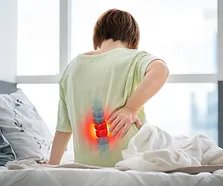
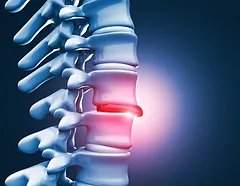
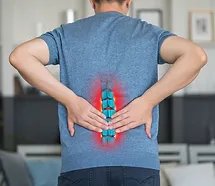
Lower back pain and numbness in the legs may be signs of disc herniation
- Numbness or tingling in the shoulders, back, arms, hands, legs or feet.
- Neck pain
- Difficulties in back flexion or extension
- Weakness in muscles
If the herniated disc compresses the sciatic nerve, the pain will be felt in the hip or buttocks and legs. Normal activities including standing and walking will intensify the pain and therefore cannot persist for a long time. Severe patients may even experience impaired functions of lower limb muscles and numbness in the legs, and possibly paraplegia and incontinence.
Disc herniation largely hindered patients’ daily activities and mobility, and may even lead to anxiety, depression and helplessness due to the agonising pain. The pain not only affects patients’ physical health but also their mental conditions.
Is surgery the only treatment for disc herniation?
Chiropractors conduct non-surgical treatment for disc herniation under the lever principle to adjust and correct the herniated disc through manipulation. Ultrasound will also be used to improve blood circulation to effectively ease the pain. In some cases, spinal decompression treatment will also be used to complement the treatment. Our advanced spinal decompression treatment technology is CE marked or imported from Asia and the UK, capable of personalising treatment plans for each patient with different conditions. The technique adjusts the herniated disc in the cervical or lumbar spine through rotation, relaxation and traction to take pressure off the compressed nerves, which can effectively relieve pain and facilitate recovery.
How to prevent disc herniation?
To prevent disc herniation, we should not only pay attention to correct postures in our daily lives, but also do more exercises during our spare time. These can improve our muscle strength and also protect our spine from future disc herniation. Other prevention methods include:
- 1. Pay attention to posture when lifting heavy objects
Squat down first before bending over. Stay close to the heavy object to reduce the pressure exerted on the lower back. - 2. Be aware of sitting posture
Do not cross your legs. Keep the back against the chair. Sit upright and do not tilt your neck forwards or backwards. - 3. Maintain normal body weight
Avoid exerting too much pressure on the spine due to being overweight. - 4. Exercise for at least 3 days every week.
Disc herniation FAQ
What should I avoid doing with a herniated disc?
Patients recovering from a herniated disc should avoid heavy lifting, exerting sudden pressure on the back or repetitive strenuous activities. Refrain from any exercises that induce or intensify the pain.
How to relieve disc herniation?
Most patients will experience overtightened iliopsoas muscles, therefore stretching and relaxing the iliopsoas muscles can assist in pain relief, such as doing a supine hip flexor stretch. Lie on your back with your buttocks at the edge of the bed. Bend your knees and draw them to your chest. Clasp your hands on your right knee. Your left buttock should be slightly out of the bed edge. Then, extend your left leg off the bed. Your groin and front thigh should feel stretched. Hold for 20 seconds and switch sides. Repeat 3 times on each side.
Do I need surgery for disc herniation?
When a disc herniation occurs, conservative treatments such as taking more rest and physiotherapy, etc., are typically used to relieve the pain. Most patients will usually have their pain alleviated after receiving treatment for a period. A few patients with severe pain may need to seek surgical treatment. If you have any enquiries, please seek medical attention as soon as possible.


